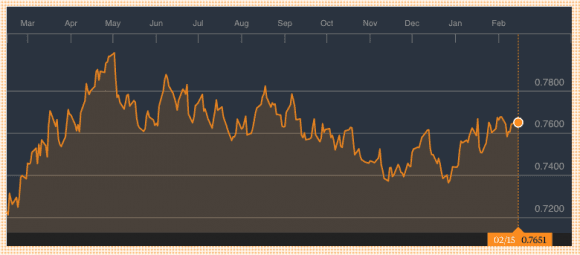The Canadian dollar appears to be a boring currency, but its recent strength is a bit surprising and worrisome for economic growth, analysts say.
Since the U.S. election, the Canadian dollar has been outperforming the euro, the yen, the pound sterling, the Australian dollar, and the Mexican peso. It’s a conundrum given what usually drives the loonie’s value.
“If you look at what oil prices have been doing this year and you look at interest rate spreads with the U.S., yes you should be surprised at what’s going on because the loonie has basically gone in the other direction,” said National Bank senior economist Krishen Rangasamy in a phone interview.
Everything is relative with currencies. Their values are tied to the differences in short-term interest rates between the two reference countries. Recently, as the U.S. two-year bond yield has risen faster than the Canadian two-year bond yield, one would expect the prospect of earning a higher interest rate to make money gravitate to the United States at Canada’s expense, therefore weakening the loonie relative to the greenback.
But there are many factors that influence the value of a currency, and the price of oil, which has historically been a critical factor for the loonie, has been particularly less influential of late.
The correlation—a measure of the similarity in movement between two variables— between the loonie and the price of West Texas Intermediate (WTI) oil has fallen sharply in 2017. The loonie is not acting like a “petro dollar.”
While Scotiabank foreign exchange strategist Shaun Osborne doesn’t like the petro dollar term, he said in a phone interview that correlations ebb and flow, but that the relative strength of the Canadian dollar is a little bit surprising given what the fundamental story for Canada is—divergent monetary policy from and weaker growth relative to the United States.






